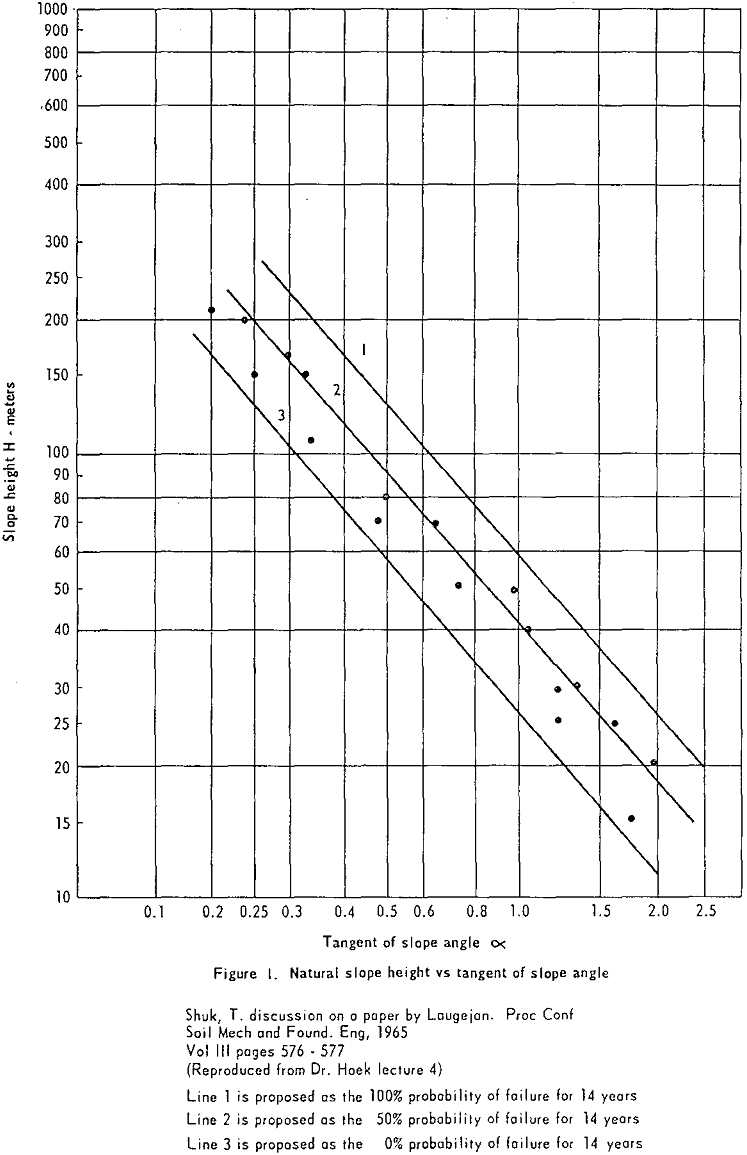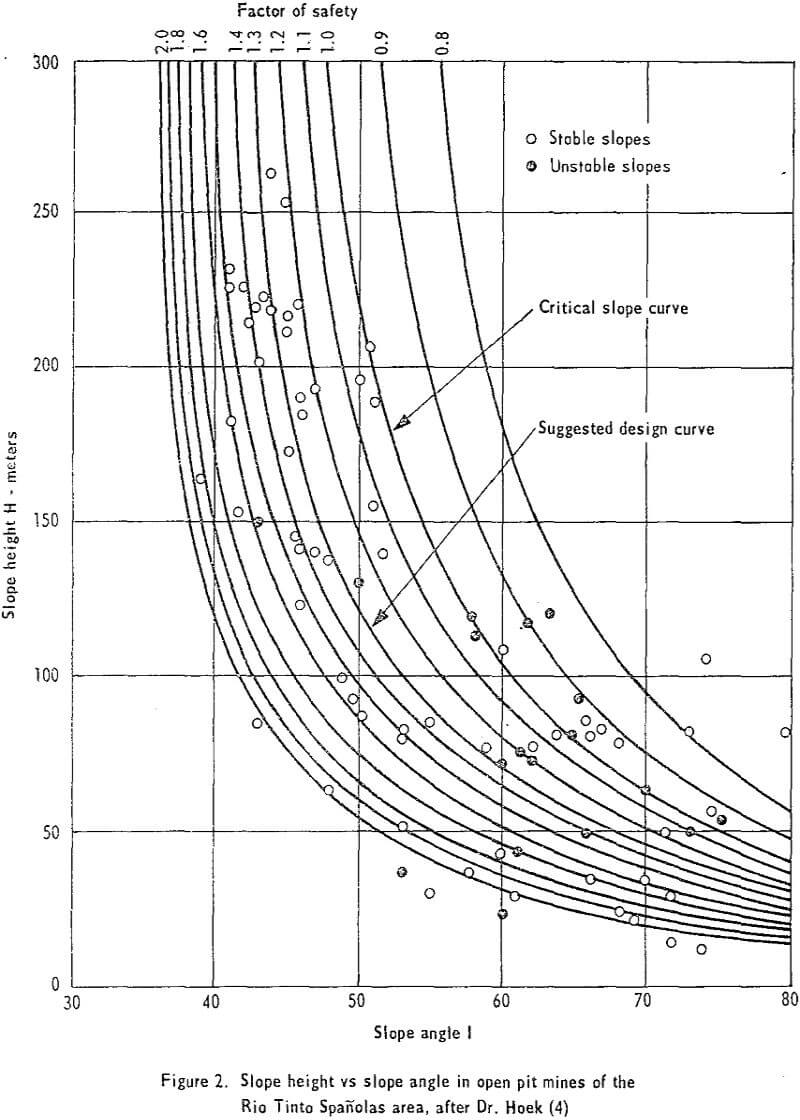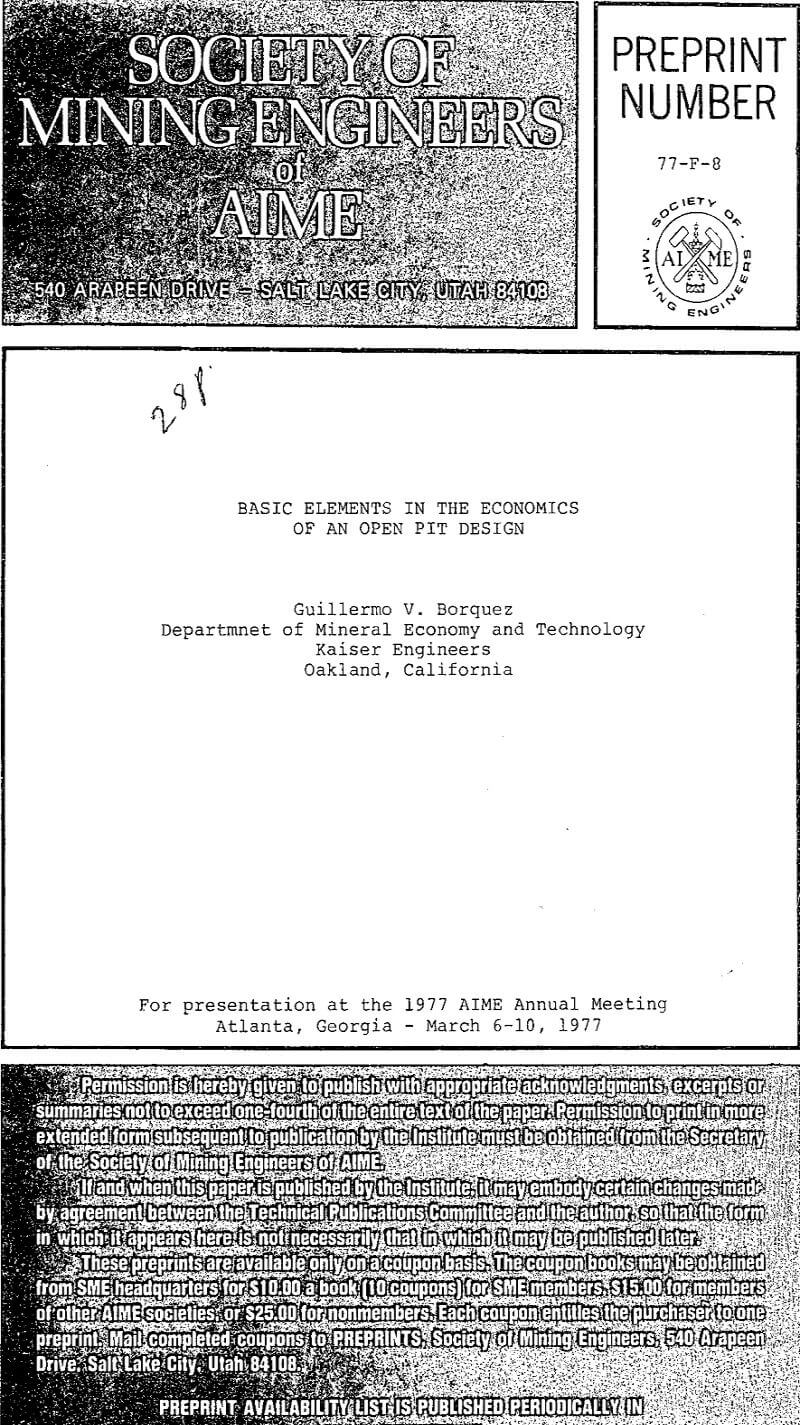Table of Contents
The economic limit of an open pit mining operation is dictated by three basic elements- cut-off grade, stripping ratio and slope angle. Although these elements are interrelated, they are functions of a number of independent parameters, which are too numerous to list completely. Simply stated, the following relationships are true:
Economic Pit Limit = f (cut-off grade, stripping ratio, slope angle)
Cut-off Grade = f (market price, mining cost, stripping ratio, etc.)
Stripping Ratio = f (geometry ore body, slope angle, etc.)
Slope Angle = f (rock properties, geology and geometry of ore body, time factor, etc. )
Cut-Off Grade
Cut-off grade is generally defined as the grade above which the average grade will be such that the product recovered will pay for its mining and treatment and yield the minimum acceptable profit. However, in open pit mining there are situations where the cut-off grade of the material that must be removed either as ore or waste is determined by the break-even cost between sending it to the processing plant or to the waste dump. In these cases, other factors should be considered such as: processing plant capacity, total tons of ore recovered, market and price conditions.
In general, the criteria for selecting the cut-off grade are dictated by several factors, including market price of the commodity, mining and processing costs, annual production rate, and mine life. The various techniques actually available for such determinations are good exercises in economic analysis.
Stripping Ratio
The stripping ratio is defined as the number of units of waste material which must be mined in order to expose the units of ore in the ore body.
SR = Vol. Pit – Vol. Ore/Vol. Ore = Overall Stripping Ratio
Obviously, this expression represents a geometric relationship depending upon the characteristics of the ore body, and it is independent of the value of the ore recovered. In general, during the initial stage of the mining, the stripping ratio is high. As mining progresses the SR decreases, reaching a minimum before increasing again with greater mining depth. At this point, the stripping ratio is a controlling factor in comparing the cost of mining by open pit versus underground methods.
Slope Angle
The maximum slope angle for a pit wall at a given depth is provided by the limit which cannot be exceeded without increasing the probability of slope failure over that which is acceptable. On the other hand, the minimum slope angle is limited by the economic stripping ratio. The lower angle value is defined by the point at which the maximum allowable or economic stripping ratio is reached. Obviously, to mine beyond this point, the operation by open pit method ceases to be profitable.
The steepest pit wall angle should be consistent with the attitude of the ore body and yield the lowest cost per ton, mined without any slope failure that may cause loss of life and equipment.
From a theoretical standpoint, failure is considered to occur when rock gets a displacement beyond recoverable strain. Cracks and rockfalls are common in open-pit mining.
The statistical analysis of historical data on slope stability failure of similar mode occurring in various types of geological conditions, could provide information adequate to establish a relationship of probability of failure versus safety of the slope angle. With this relationship, the final selection of the slope angle could be posed on a profit versus risk judgment. Personnel and equipment safety considerations, of course, take priority.
Model for Selecting the Range of Slope Angle
The first range is given by the break-even stripping ratio open pit-underground and the minimum safety factor allowable (SF = 1). This sets the minimum angle at 35° and the maximum at 65°.
The second range is set by the mine recovery factor. The minimum value is determined by the lowest desired ore recovery of 80%. The maximum value is defined by the point which maximizes the ore recovery. This sets the range between the values of 46°-62°.
The final selection could be made by the criteria of the maximum desirable percentage of probability of failure or unstable slope, within the previous selected range of 46°-62°. For illustrative purposes, let us assume that the maximum desirable unstable slope is 12%, as is shown in Figure 9; this sets the maximum slope angle of 54°. On the other hand, if the maximum unstable slope is selected at 25%, this sets the maximum slope angle of 60°.
Obviously, this is an elusive line of demarcation and a better selection of the slope angle could be set by a profit versus probability of operational failure judgment.
Net return per ton = P x Av x Re x 2200 -SR x a-b-c-d x (SR+1) – e. . . etc.
where:
P = US$0.65
Av = 1. 5% Cu
Re = 84%
SR = function of slope angle, obtained from Figures 8 or 9
a = US$1. 0
b = US$1. 0
c = US$2. 0
d = US$0. 25
e = US$4. 5


